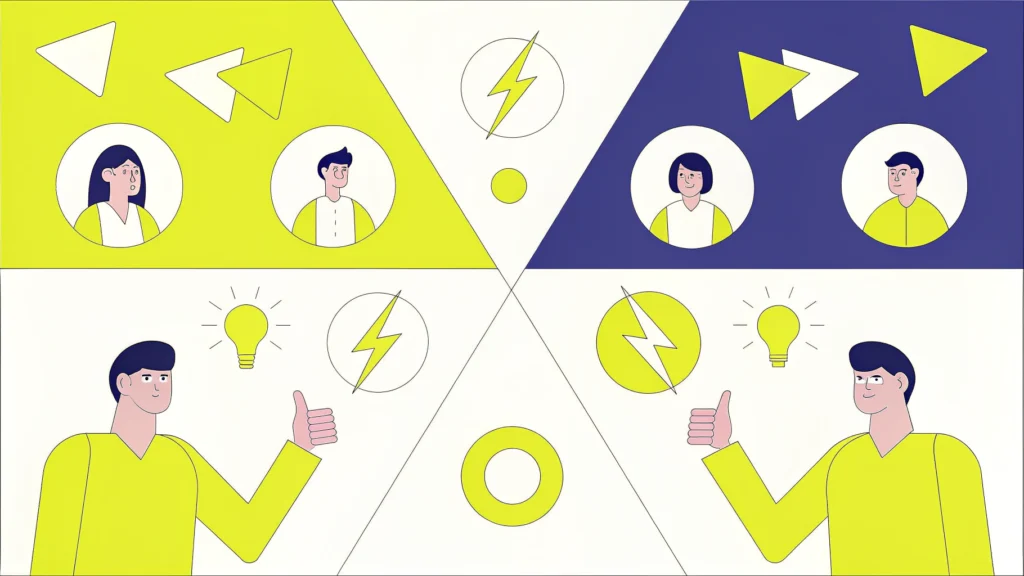Overview
This article delves into effective strategies for rerouting negative energy within car buyer communities. By identifying sources of negativity and fostering positive interactions, it aims to transform group dynamics and enhance overall engagement. Key methods include:
- Monitoring social media discussions
- Engaging with community members through Q&A sessions
- Creating uplifting content
These approaches are designed to not only address the issues at hand but also to encourage a more constructive atmosphere. By implementing these strategies, community leaders can significantly improve interactions and promote a more positive environment.
Introduction
Negative energy can permeate online communities, particularly in car buyer forums where frustrations often run high. This pervasive negativity poses a significant challenge that undermines the potential for constructive dialogue. Understanding how to effectively reroute this negativity not only enhances community dynamics but also fosters a more supportive environment for potential buyers.
What strategies can be employed to transform these interactions from toxic to constructive? How can community leaders engage members in a way that promotes positivity?
Exploring these questions reveals actionable approaches that can revitalize discussions and strengthen connections among car buyers. By implementing effective strategies, we can create an environment that encourages collaboration and support.
Identify Sources of Negative Energy in Car Buyer Communities
To effectively learn how to reroute negative energy in car buyer communities, it is essential to start with a thorough examination of the discussions occurring within these circles. Here’s a structured approach:
- Monitor Social Media Platforms: Utilize tools such as Hootsuite or Sprout Social to track brand mentions and relevant keywords associated with car buying. Pay close attention to comments that indicate frustration or dissatisfaction.
- Analyze Community Feedback: Identify recurring themes in negative comments. Are users expressing concerns about pricing, customer service, or product quality? Document these issues for deeper analysis.
- Engage in Discussions: Actively participate in group discussions to gain firsthand insights. Pose open-ended questions to encourage participants to share their experiences and feelings, fostering a more open dialogue.
- Conduct Surveys: Create surveys to gather feedback from local members regarding their experiences and perceptions. This method can uncover specific pain points that may not be evident in public discussions.
- Review Competitor Interactions: Examine how competitors are talked about within these groups. Negative sentiments towards competitors can influence perceptions of your brand, making it crucial to understand this context.
By recognizing these sources of negativity, you can develop focused approaches on how to reroute negative energy in car buyer communities to tackle issues efficiently and promote a more uplifting environment.

Engage with Community Members to Foster Positive Interactions
Interacting with local individuals is essential for promoting positive exchanges in car buyer groups. To achieve this, consider the following effective strategies:
-
Acknowledge Concerns: Begin by recognizing the issues raised by local residents. Responding to negative comments with empathy demonstrates that you value their opinions and are committed to addressing their concerns. As Sean Toussi, CEO & co-founder of Glo3D.com, states, “Trust doesn’t happen overnight—it’s earned through consistency and care.”
-
Host Q&A Sessions: Organize live Q&A sessions where members can ask questions and express their concerns. This direct interaction not only clarifies misunderstandings but also fosters trust within the group. Data indicates that such sessions can significantly boost engagement, as 73% of buyers appreciate participation when selecting a dealership.
-
Establish a Response System: Encourage participants to share their opinions on how the group can improve. Implementing their recommendations nurtures a sense of ownership and positivity, making members feel invested in the group’s success.
-
Highlight Positive Stories: Share success narratives or testimonials from satisfied customers within the group. This approach showcases your brand’s strengths and encourages others to share their positive experiences, reinforcing a culture of positivity.
-
Recognize Active Members: Acknowledge and reward participants who contribute positively. This recognition could come in the form of shout-outs, badges, or small giveaways, motivating others to engage constructively.
By implementing these strategies on how to reroute negative energy in car buyer communities, you can gradually shift the group’s focus away from negativity, creating a more supportive and engaged environment. Successful Q&A sessions, as highlighted in various case studies, have proven to enhance public engagement significantly, showcasing the effectiveness of these methods.

Create and Share Positive Content to Shift Community Dynamics
Generating and disseminating uplifting content is crucial for learning how to reroute negative energy in car buyer communities. Here’s how to do it:
-
Create Educational Material: Produce blog articles, videos, or infographics that inform individuals about car purchasing tips, maintenance guidance, or financing alternatives. This positions your brand as a valuable resource, enhancing trust and engagement.
-
Share User-Generated Content: Encourage members to share their own stories and experiences with your brand. Highlighting these contributions fosters a sense of belonging and positivity, as 84% of consumers are more likely to trust companies that incorporate UGC into their marketing efforts. Additionally, UGC can lead to a 15-30% increase in conversion rates, demonstrating its effectiveness in driving sales.
-
Utilize Visuals: Use engaging visuals, such as images and videos, to capture attention. Positive imagery related to car ownership can evoke emotions and encourage sharing, significantly boosting engagement rates. Leveraging platform-specific strategies, such as creating high-retention short-form videos for TikTok, can further enhance visibility and engagement.
-
Run Positive Campaigns: Launch initiatives that focus on uplifting themes, such as customer appreciation or community involvement. Campaigns such as Toyota’s #ToyotaAdventure have demonstrated how UGC can result in a 29% rise in conversion rates, altering the narrative towards a more favorable tone. A long-term organic strategy builds trust and visibility over time, avoiding ad fatigue and establishing authority across platforms. Incorporating deep audience research and maintaining a scheduled, consistent posting calendar can further enhance these campaigns.
-
Leverage Influencers: Collaborate with influencers who resonate with your target audience. Their favorable endorsements can reshape perceptions and encourage constructive discussions, driving engagement and loyalty. As noted by marketing professionals, “UGC is proving to be the most effective way to engage audiences, build credibility, and drive conversions.”
By consistently sharing positive content and integrating real-time trends, you can help foster a more supportive and engaged group, ultimately enhancing brand loyalty and driving conversions, which is essential for understanding how to reroute negative energy in car buyer communities.

Monitor Community Sentiment and Adjust Strategies Accordingly
To ensure the effectiveness of your strategies, monitoring public sentiment regularly is crucial. Here’s how you can achieve this:
-
Utilize Advanced Sentiment Analysis Tools: Implement tools like Brandwatch or Mention to analyze the sentiment of discussions within your group. These platforms provide insights into the overall mood, helping you identify emerging issues and trends.
-
Monitor Engagement Metrics: Track engagement metrics such as likes, shares, and comments on your posts. An increase in positive interactions may signal a successful change in social dynamics, with video content achieving engagement rates of up to 50% for short-form posts.
-
Request Direct Feedback: Frequently inquire from group members for input on your initiatives via polls or direct messages. This method allows you to assess their views and adjust your plans accordingly.
-
Enhance Content Approach: Utilize insights from sentiment analysis and audience feedback to modify your content plan. If certain topics resonate well, consider producing more content around them to enhance engagement and relevance.
-
Maintain Agility: Be prepared to adjust your approaches as needed. The digital landscape is continually changing, and responsiveness to public sentiment is essential for creating a positive atmosphere.
By continuously monitoring sentiment and adapting your strategies, you can ensure that your efforts align with how to reroute negative energy in car buyer communities effectively and remain relevant. Engaging with your community not only enhances brand loyalty but also drives higher conversion rates, as 84% of marketers report that social media-driven calls yield larger order values.

Conclusion
Rerouting negative energy in car buyer communities is essential for fostering a supportive and constructive environment. By actively engaging with community members, addressing their concerns, and promoting positive interactions, we can transform the dynamics of these groups. Understanding the sources of negativity and taking proactive steps to create a more uplifting atmosphere is paramount.
Key approaches include:
- Monitoring discussions on social media
- Engaging in meaningful conversations
- Sharing positive content that resonates with community members
Implementing these tactics not only mitigates negative sentiments but also cultivates a culture of trust and collaboration. Utilizing tools for sentiment analysis and adjusting strategies based on community feedback further enhances the effectiveness of these initiatives.
Ultimately, the significance of creating a positive environment in car buyer communities cannot be overstated. As these spaces evolve, the impact of constructive engagement will lead to stronger relationships, increased brand loyalty, and improved overall satisfaction among members. Embracing these strategies is a vital step toward ensuring that the conversations surrounding car buying are not only informative but also empowering for all participants.
Frequently Asked Questions
How can I identify sources of negative energy in car buyer communities?
You can identify sources of negative energy by monitoring social media platforms for brand mentions and relevant keywords, analyzing community feedback for recurring themes in negative comments, engaging in discussions to gain insights, conducting surveys to gather member feedback, and reviewing how competitors are discussed within these groups.
What tools can I use to monitor discussions in car buyer communities?
Tools such as Hootsuite or Sprout Social can be utilized to track brand mentions and relevant keywords associated with car buying.
What types of issues should I look for in community feedback?
Look for concerns regarding pricing, customer service, or product quality, as these are common themes in negative comments.
How can I engage with community members to understand their experiences better?
You can engage by actively participating in group discussions and posing open-ended questions to encourage participants to share their experiences and feelings.
What is the purpose of conducting surveys in car buyer communities?
Conducting surveys helps gather feedback from local members regarding their experiences and perceptions, uncovering specific pain points that may not be evident in public discussions.
Why is it important to review competitor interactions within these groups?
Understanding how competitors are talked about can influence perceptions of your brand, making it crucial to recognize any negative sentiments that may affect your reputation.

